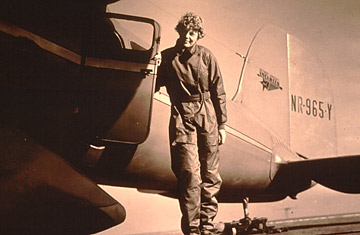
The Kansas native achieved a number of firsts as a female aviator, becoming an icon to women around the world in the process. By the time she was 40, Earhart had become the first woman to fly across the Atlantic, the first woman to fly nonstop across the U.S. and the first woman to receive the Distinguished Flying Cross award. But there was still one record that alluded her — she wanted to become the first female aviator to fly around the world.
On June 1, 1937, Earhart and co-pilot Fred Noonan set off in their "flying laboratory" from Miami and headed toward Howland Island, some 2,550 miles away. They never reached their destination. (The plane's navigation equipment, it turned out, had been malfunctioning before their departure.) Almost immediately, Earhart's husband, publisher George Palmer Putnam, sent a telegram to President Franklin D. Roosevelt requesting the help of the U.S. Navy. At a cost of $250,000 a day, military ships scoured the ocean for any sign of Earhart, her co-pilot or the plane. Two years later, her death was officially declared.